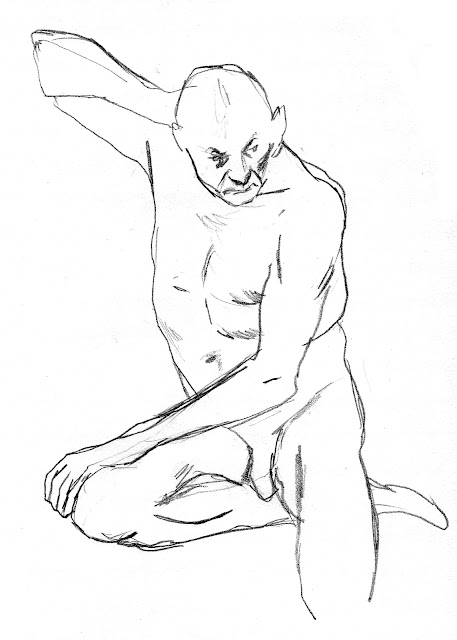As a youngster I remember being frightened by any request to draw from life and I figure the feeling is shared among many of those who paint, draw or illustrate, even among professional.
Drawing from life exposes the artist, more than the models.
Be it a portrait, or a full body pose, the work can be immediately compared to its real-life model by anyone passing by. Every onlooker can easily judge whether the likeness has been got.
The portrayed might react badly if the portrait is not accurate (or flattering) enough.
Drawing from life implicates that you are not alone. You won't be judged only by the result, but also by how long it will take you and by how you approach the task at hand.
But in time, drawing from life became one of my favourite occupations.
Being a staple of any traditional (and I dare say serious) art curriculum, schools, academies and other educational venues organise life sessions.
But since I left school I had little opportunities to have people pose for me (and I never dare asking, fearing I would sound cheeky).
So, when I found out that life sessions were regularly organised by Serge Baeken in Antwerp for people who cannot afford private sessions with models, I made sure to participate as often as I could (which is not nearly as much as I would like to).
Serge's sessions are great and particularly attuned to my sensibilities.
The posing times are short (5, 10, 15 minutes) which are great for people like me who mostly like to sketch and outline the drawing rather than work on rendering highlights and shadows.
Short posing times allow also to ask for more extreme poses, unsustainable for long stretches of time.
The illustration below were drawn during a different session with a different group, where poses are held for 30 minutes. The model chose of course more confortable positions.
But really, drawing from life can be done in any possible way. It is kind of addicting. So much so, that sometimes I draw from photographs with the same speed, urgency and approach.














